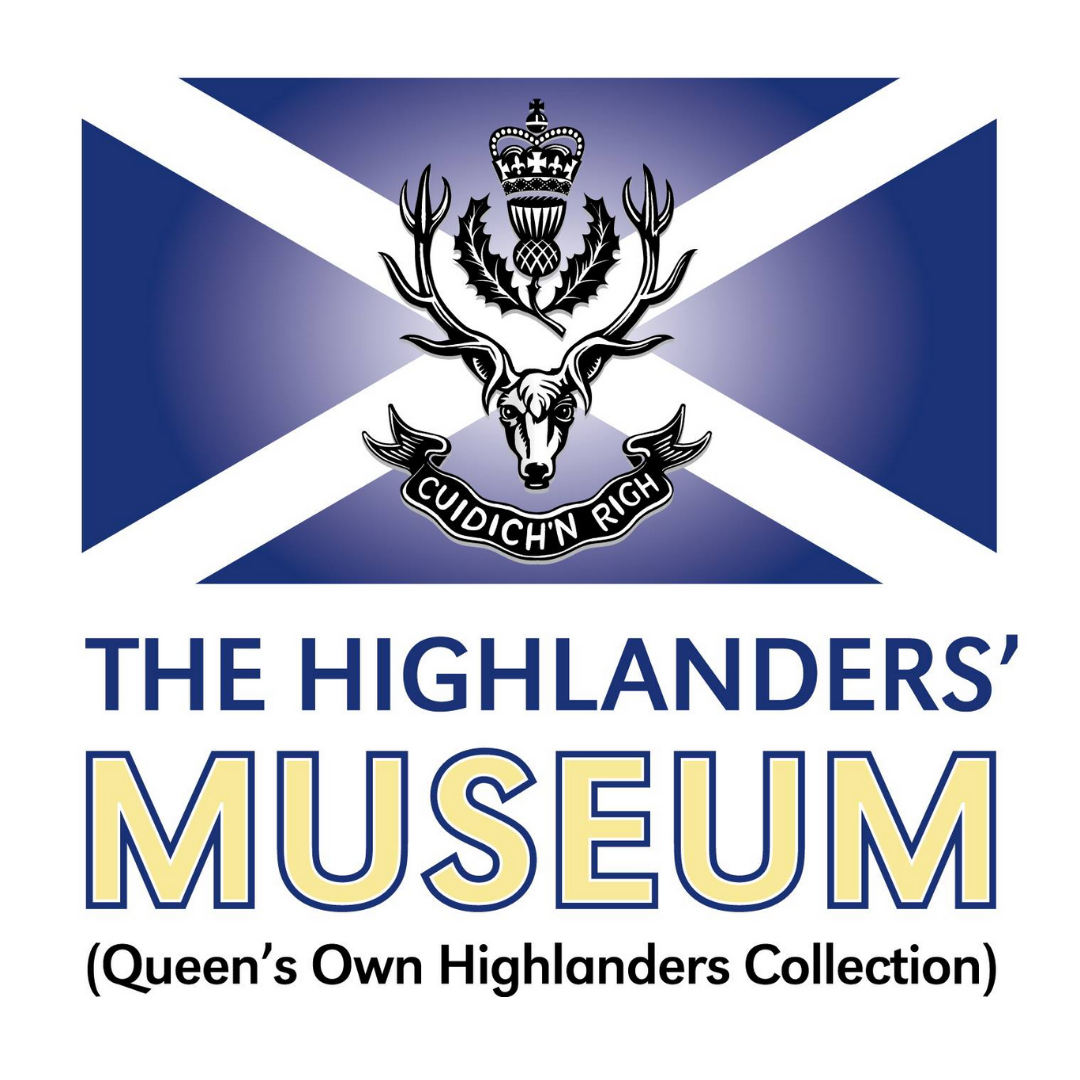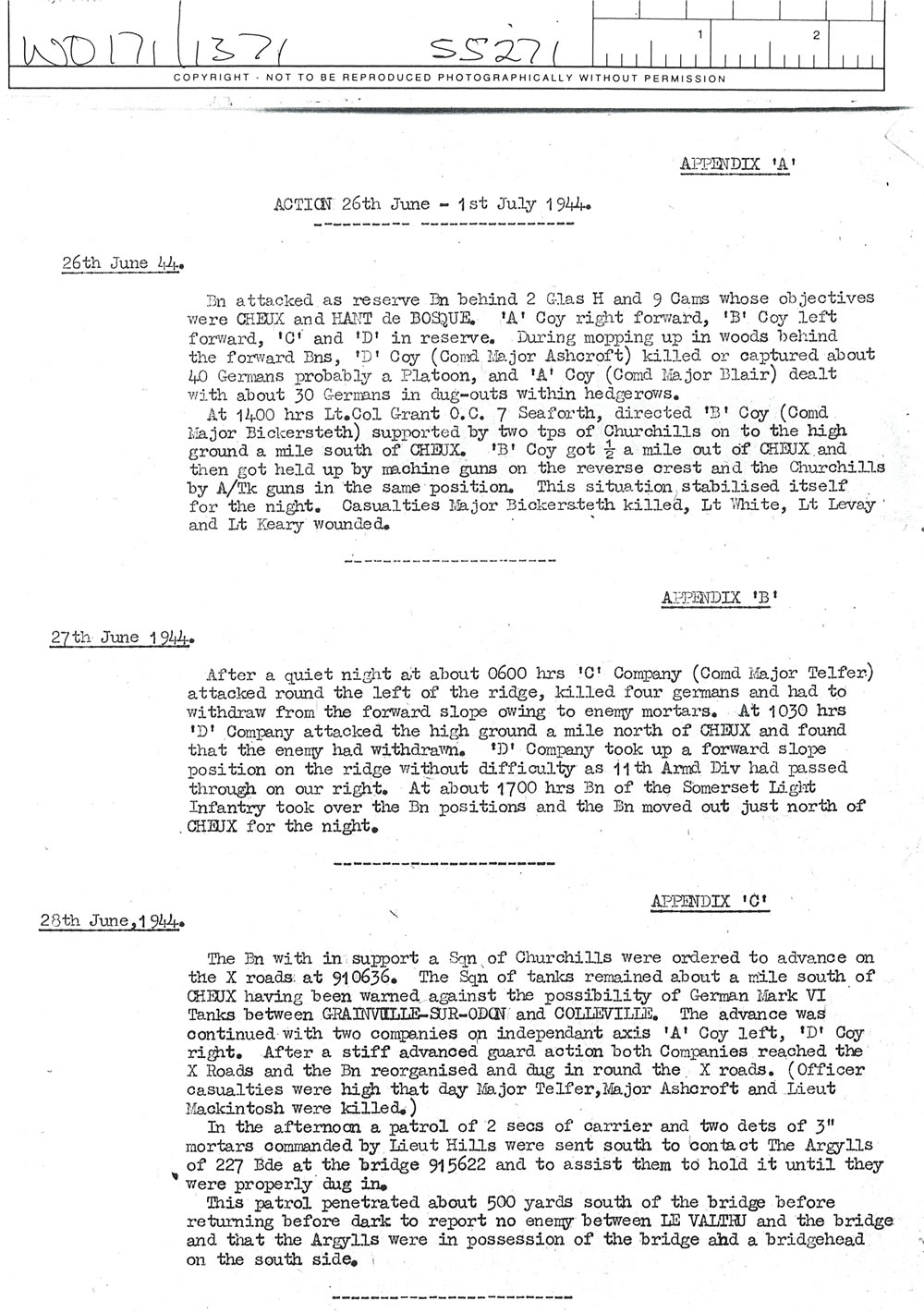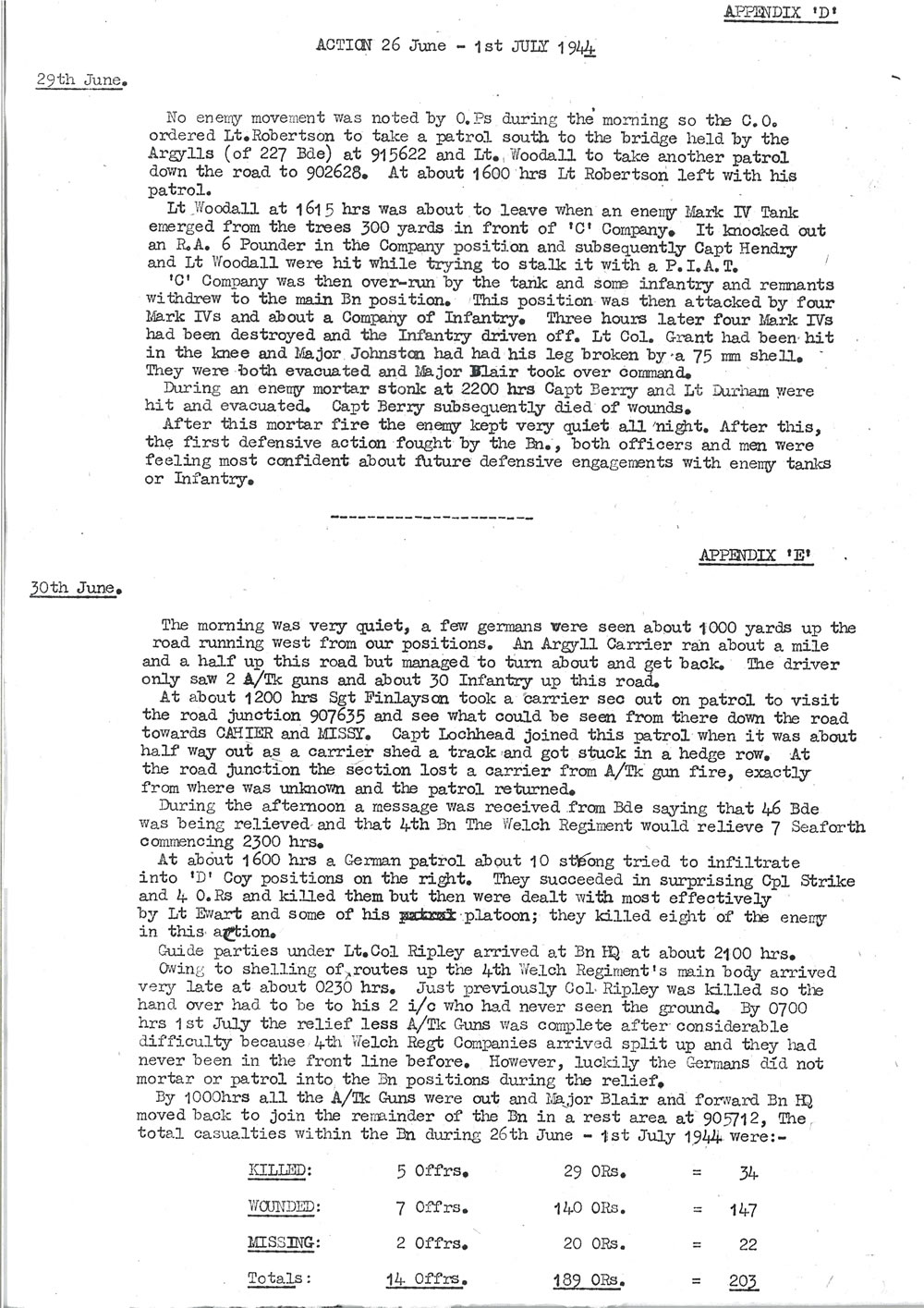7th Seaforth War Diaries
26th to the 30th June 1944
From POW to GOC
6th June 1944, better known as D Day, was the point at which the liberation of Western Europe began and the Allies opened a second front to support the Russians in the East. For the 80th Anniversary we take a look at the role played by one particular Seaforth officer in this epic conflict. Whilst the anniversary largely focuses on events on 6th June, this was just the first day of what turned out to be a gruelling 12-week Battle for Normandy. Although not engaged on D Day itself, the 152nd Highland Brigade of the 51st (Highland) Division comprising 2nd and 5thSeaforths and 5th Camerons landed on Juno beach, near Courselles, between 7-9th June.
Meanwhile, waiting patiently with 7thSeaforthsat Hove in Sussex was acting Major Chandos Blair,officer commanding A Company. This was to be his second channel crossing of the war, the first trip taking rather longer than expected before he was able to return home. Four years earlier, as a 20 year-old 2nd Lieutenant not long out of Sandhurst, he had been with the 2ndSeaforths during their fateful retreat to and capture at St Valery in June 1940.Shunted between various POW camps in Poland and Germany, Lieutenant Blair became the firstBritish Army Officer to successfully escape from Germany. Arriving back in Portsmouth in January 1942, via Switzerland, France, Spain and Gibraltar, he was awarded the MC for his escape.
On his return to Scotland, Blair was posted to the Highland Brigade Training Centre at Fort George and then the School of Infantry GHQ at Barnard Castle. In April 1943 he was posted to the 7th Battalion Seaforth Highlanders, then based in Northumberland and training for what would develop into operation Overlord – the invasion of Normandy.
7th Seaforth sailed for France on 16th June 1944, part of the 46th (Highland) Infantry Brigade of the 15th (Scottish) Division. Their first major action was Operation ‘Epsom’, the attack to seize the crossings over the river Odon, in preparation for the advance south from Caen. The attack started at 07:30 on the morning of 26th June, where the 7th Seaforth War Diary takes up the story:
“Battalion attacked as reserve behind 2nd Glasgow Highlanders and 9thCameronians whose objectives were CHEUX and HANT de BOSQUE. A Coy right forward, B Coy left forward, C and D in reserve. During mopping up in woods behind the forward Battalions, D Coy (Comd Major Ashcroft) killed or captured about 40 Germans probably a platoon, and A Coy (Comd Major Blair) dealt with about 30 Germans in dug-outs within hedgerows”.
Later in the day whilst attempting to take the high ground a mile south of Cheux, Major Bickerstaff, commanding B Company was killed along with 6 other ranks, the first casualties of the 7thSeaforth campaign. During the next four days of fierce fighting the Battalion suffered over 200 casualties killed, wounded or missing. The wounded included the Commanding Officer Lt. Colonel Grantand his 2nd in Command, Major Johnston, so on 29th June Major Blair took over command of the Battalion. He was awarded a bar to his MC for his actions on 28th and 29th June. On 30th June, after failing to make the decisive breakthrough around Caen, General Montgomery called a halt to ‘Epsom’.
Always one to put a positive gloss on actions even when things had clearly not gone to plan, Montgomery sent the following note to Major General G.H.A Macmillan, 15th Division Commander:
“I would like to congratulate the 15th Division as a whole on the very fine performance put up during the last week’s fighting. The Division went in to battle for the first time in this war; but it fought with great gallantry and displayed a grand offensive spirit. Scotland can well feel proud of the 15th Scottish Division, and the whole Division can be proud of itself. Please congratulate the Division from me and tell all the officers and men that I am delighted at what they have done”.
After Epsom the Battalion regrouped around Putot-en-Bessin, with Lt Colonel Robertson taking over command fromMajor Blair on 6th July. Over the course of July, the 15th (Scottish) Division was moved to the American sector and took part in operation ‘Bluecoat’, the breakout from Caumont. On the night of 30/31st July the Battalion successfully took it’s objective, Quarry Hill, known as Hill 309. It was whilst defending Hill 309 from a German counterattack that Major Blairwas wounded by shelling from enemy tanks, along with two other company commanders. He was evacuated to England and after recovering spent the rest of the war at the Staff College, Camberley. Thereafter an eventful army career included postings to India, Egypt, Aden, the BAOR and Northern Ireland. Hewas Defence Services Secretary, the senior member of the Royal Household responsible for liaison between the Sovereign and the Armed Forces, from 1970-1972 and his final posting was General Officer Commanding (GOC) Scotland and Governor of Edinburgh Castle from 1972-1976.
Lieutenant-General Sir Chandos Blair, KCVO, OBE, MC is well known to many at the Highlanders Museum as he served as Colonel of the Queen’s Own Highlanders from 1975-1983, and his photograph sits alongside the other Colonels of the Seaforth, Camerons and QOH on the museum staircase. He died on 22nd January 2011 aged 91.
Craig Durham
Volunteer, the Highlanders Museum


